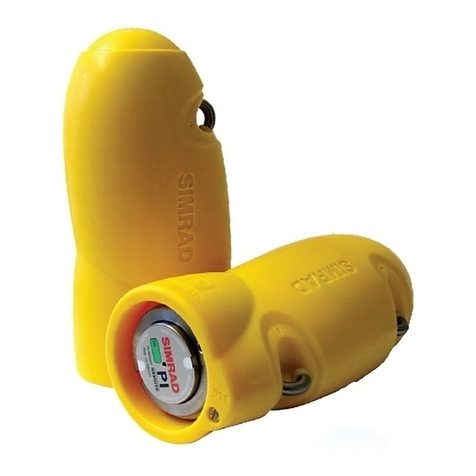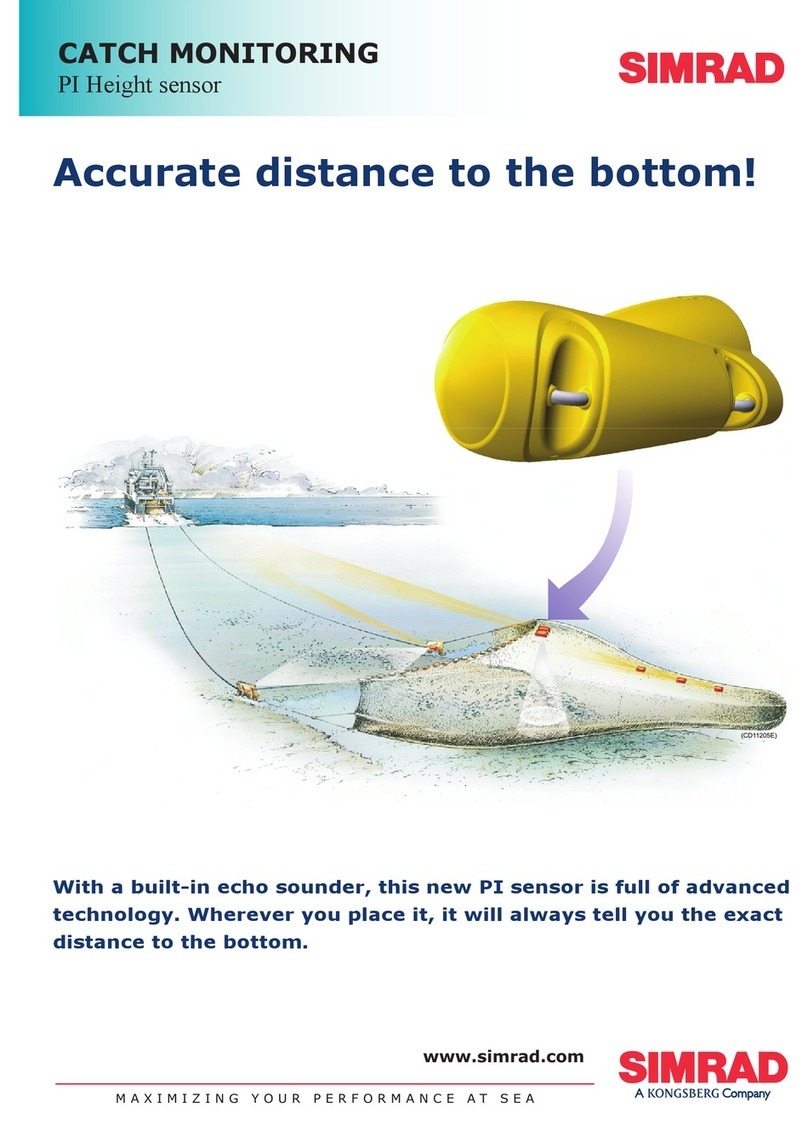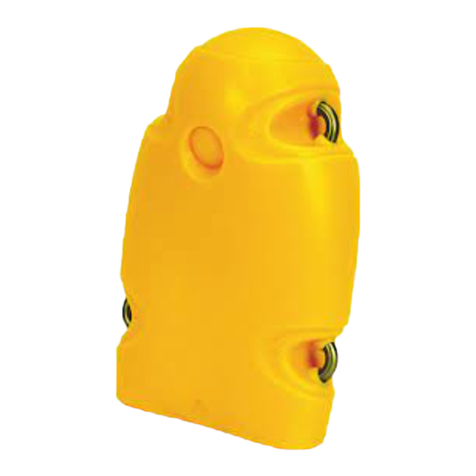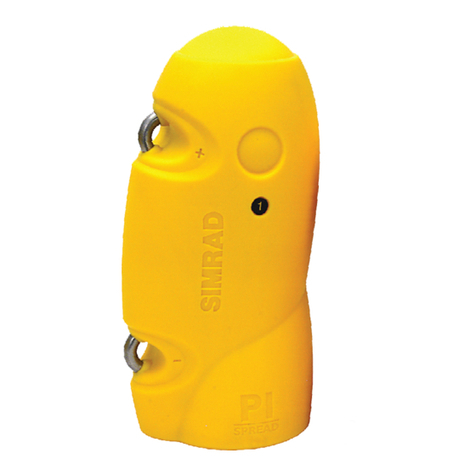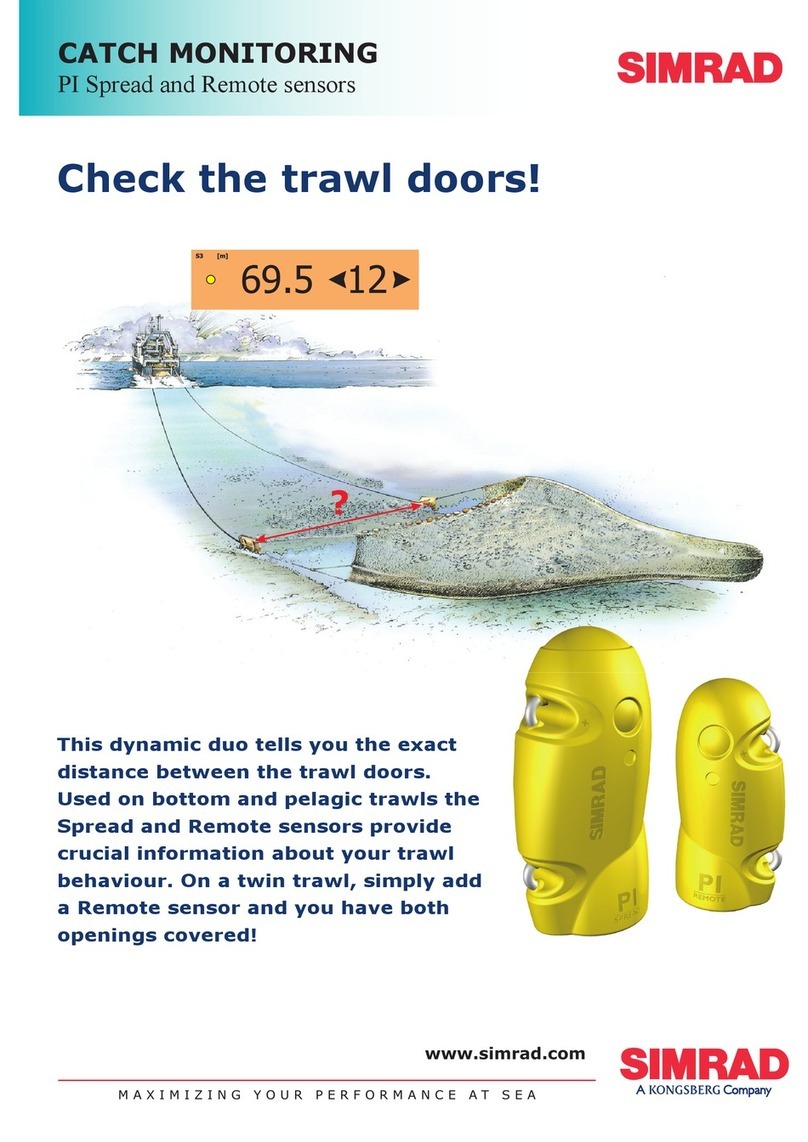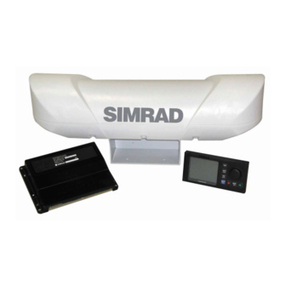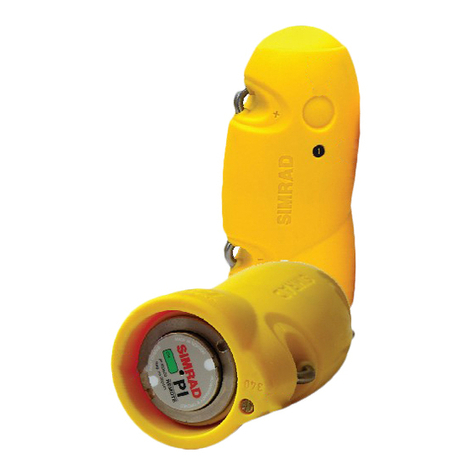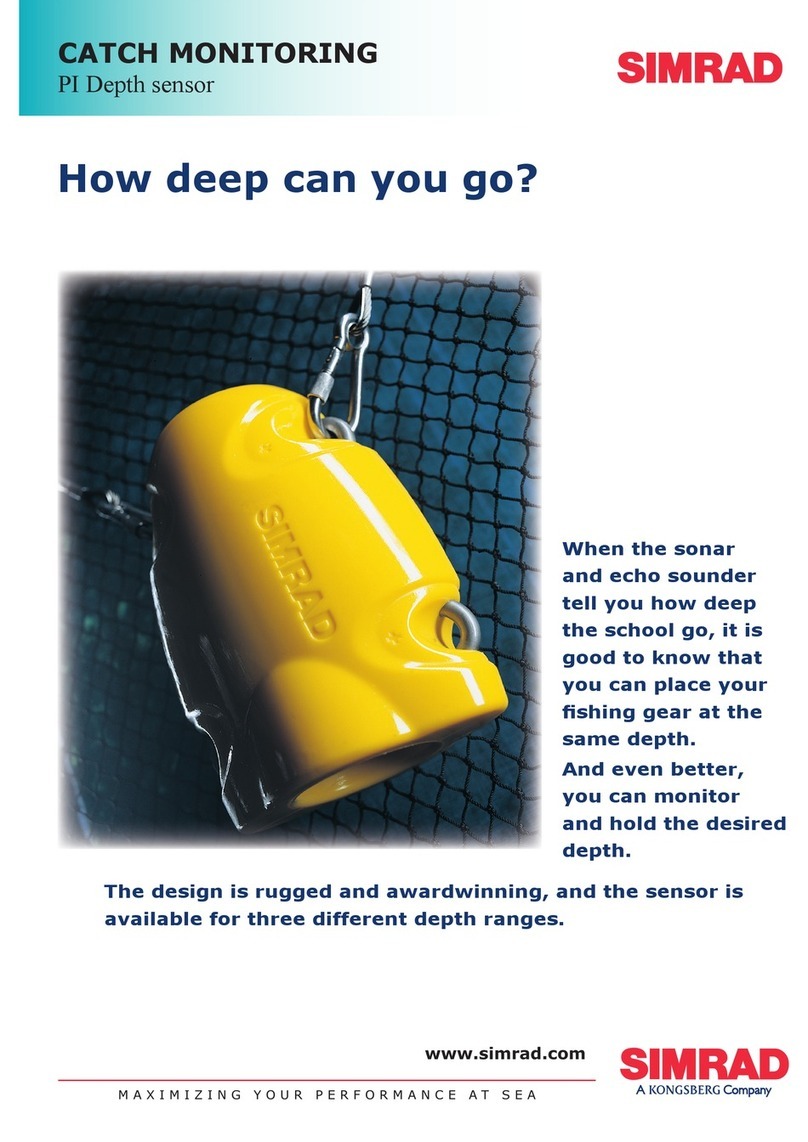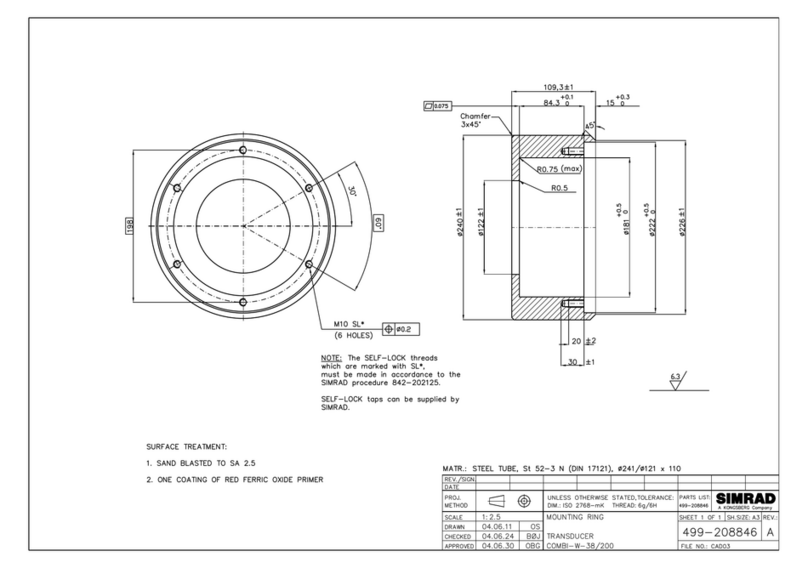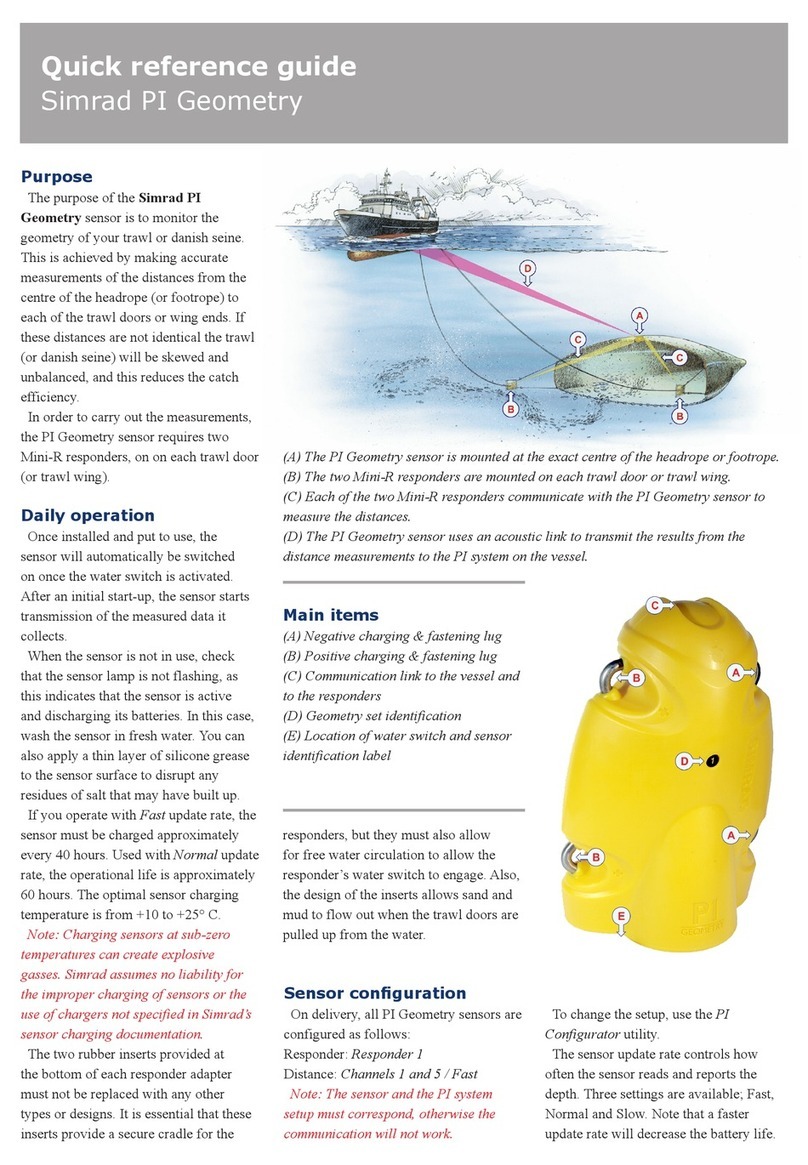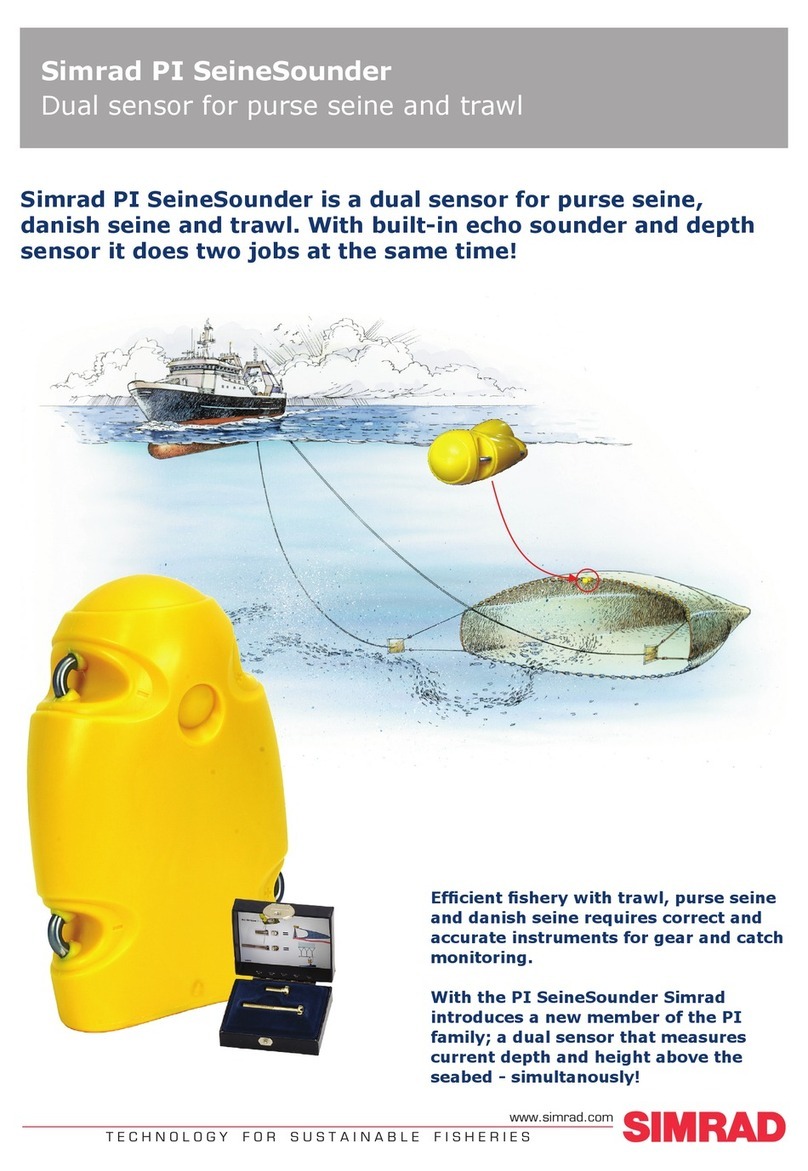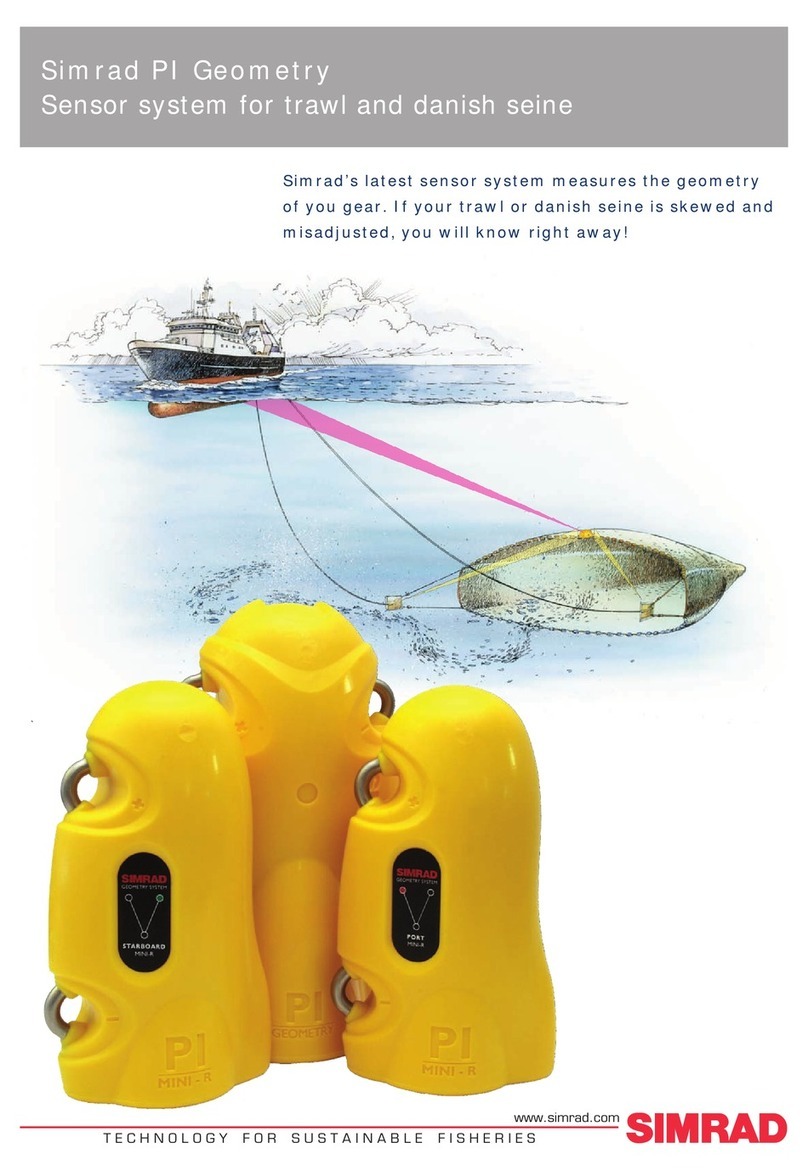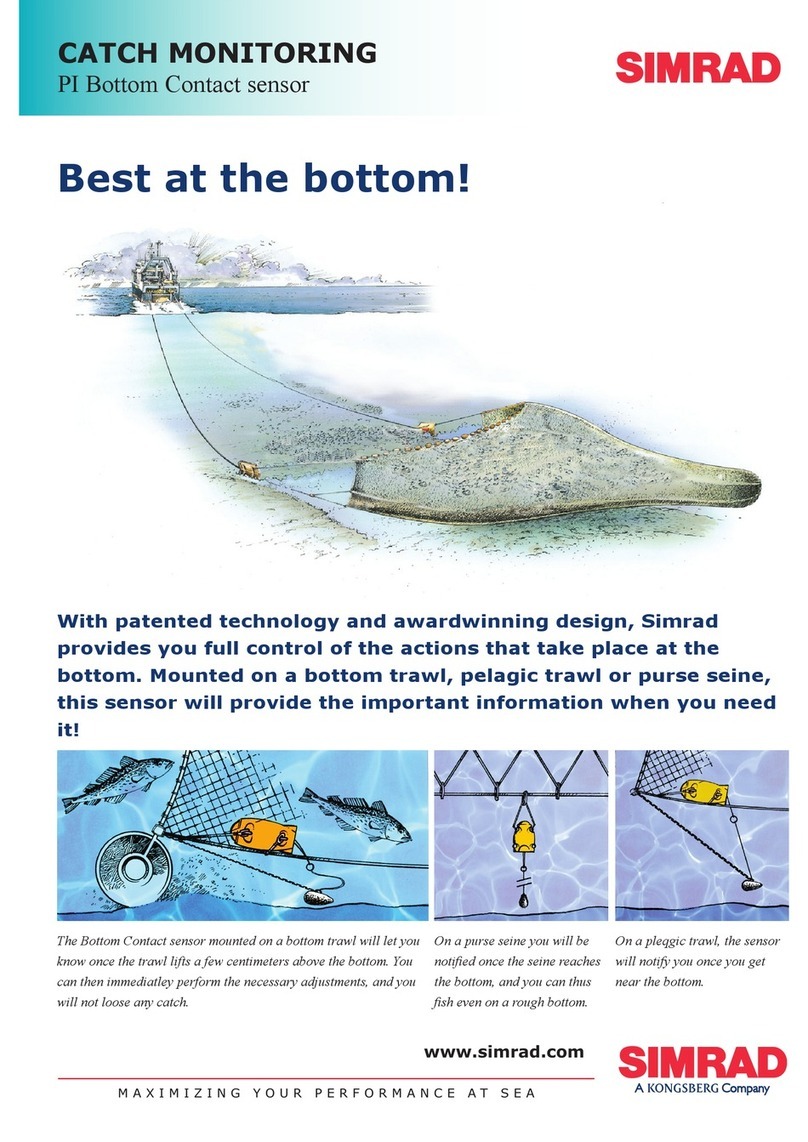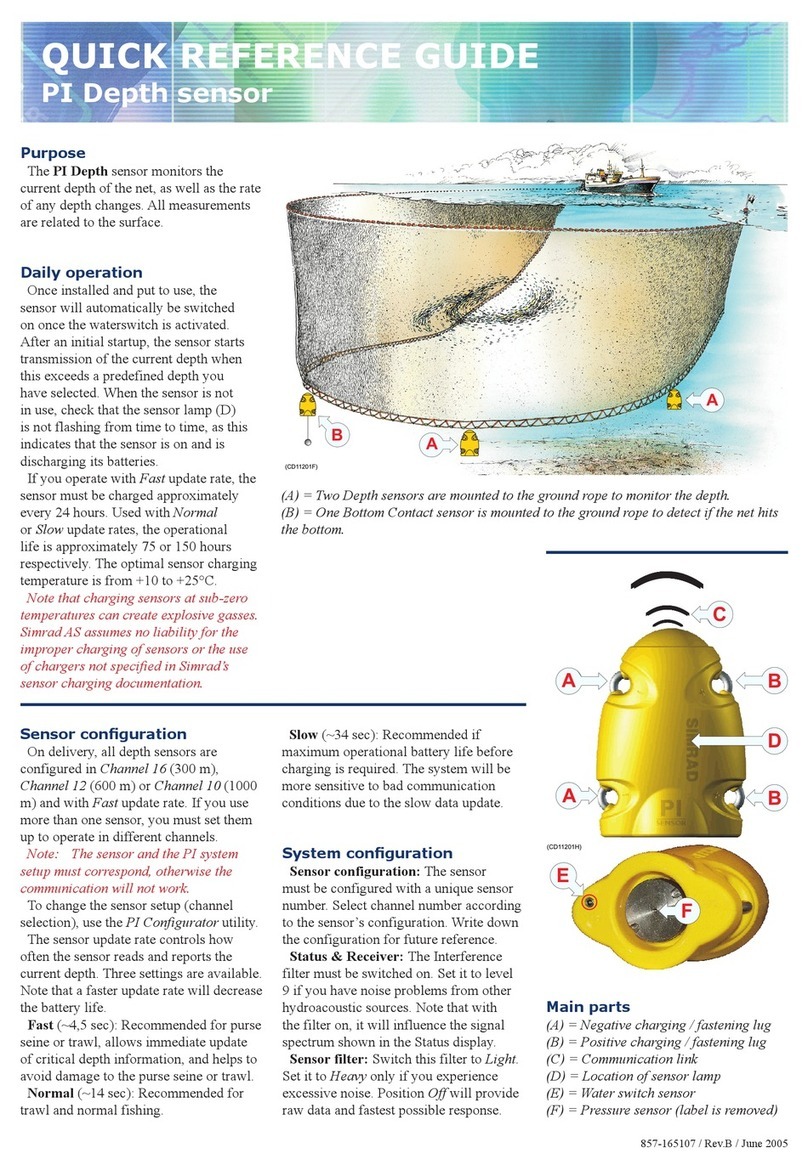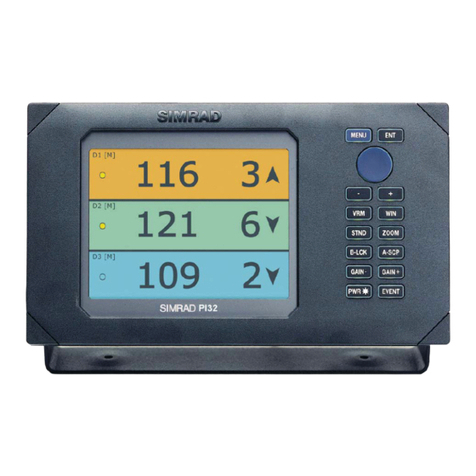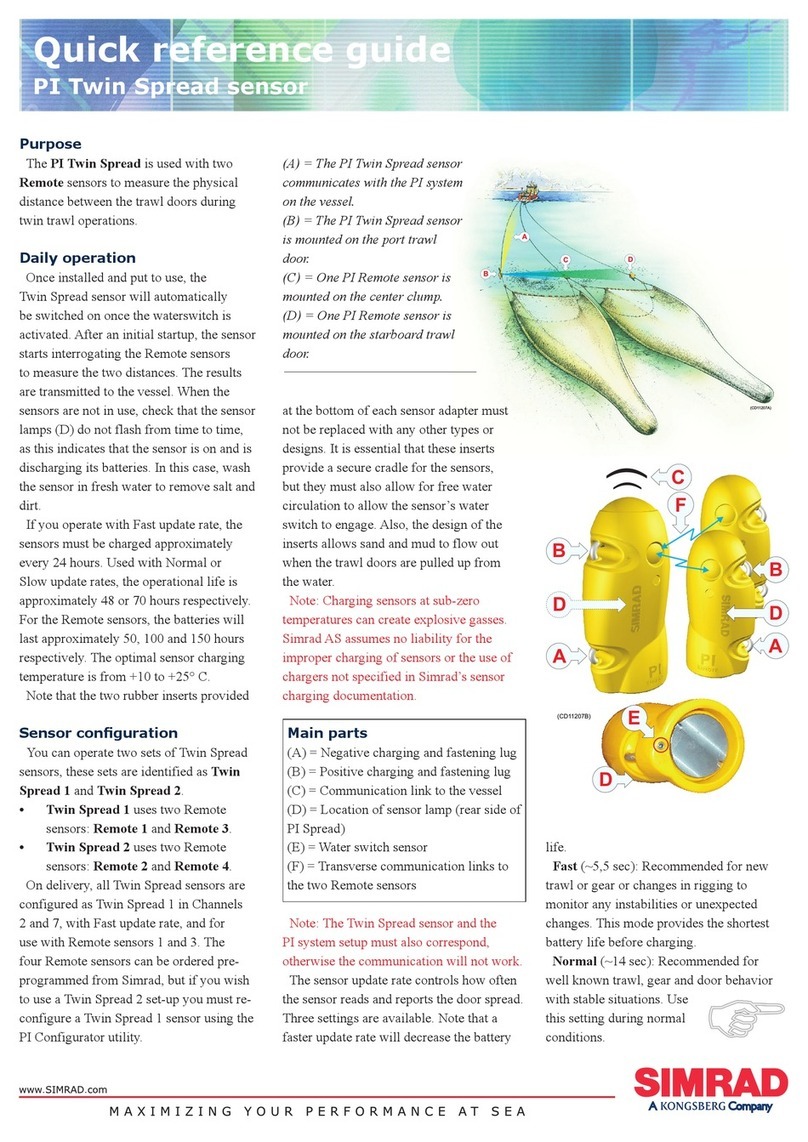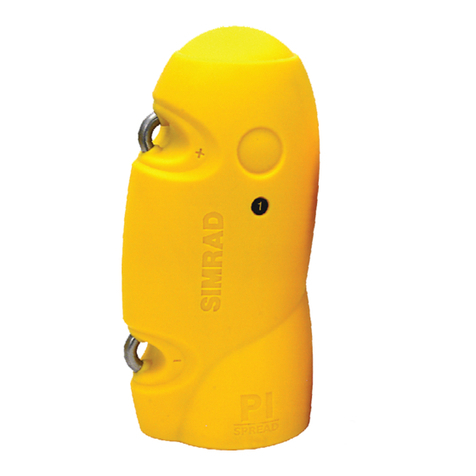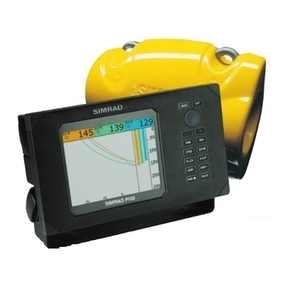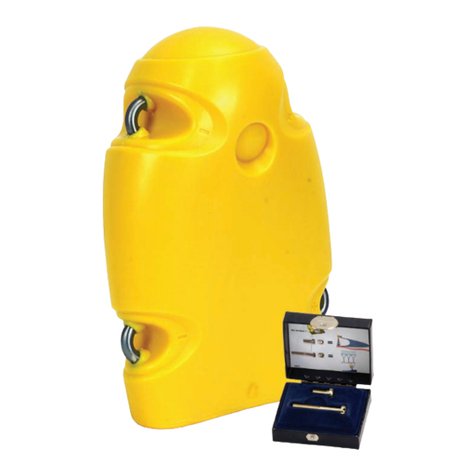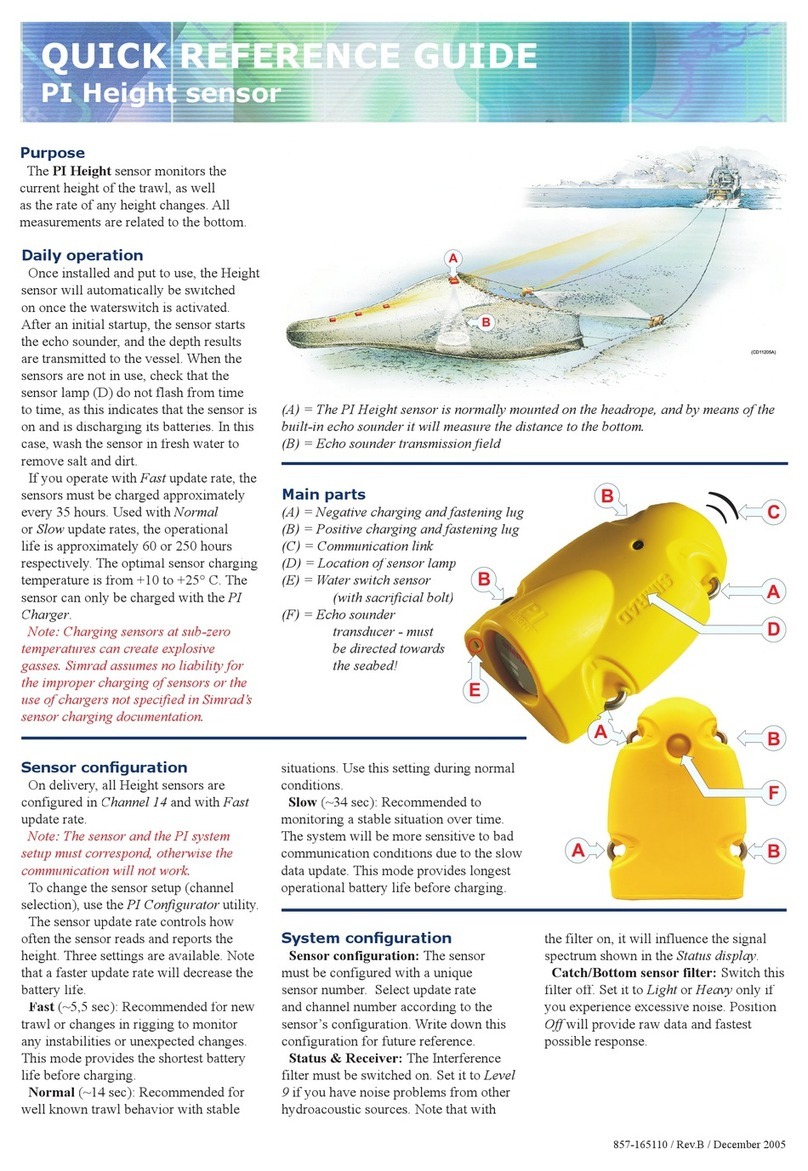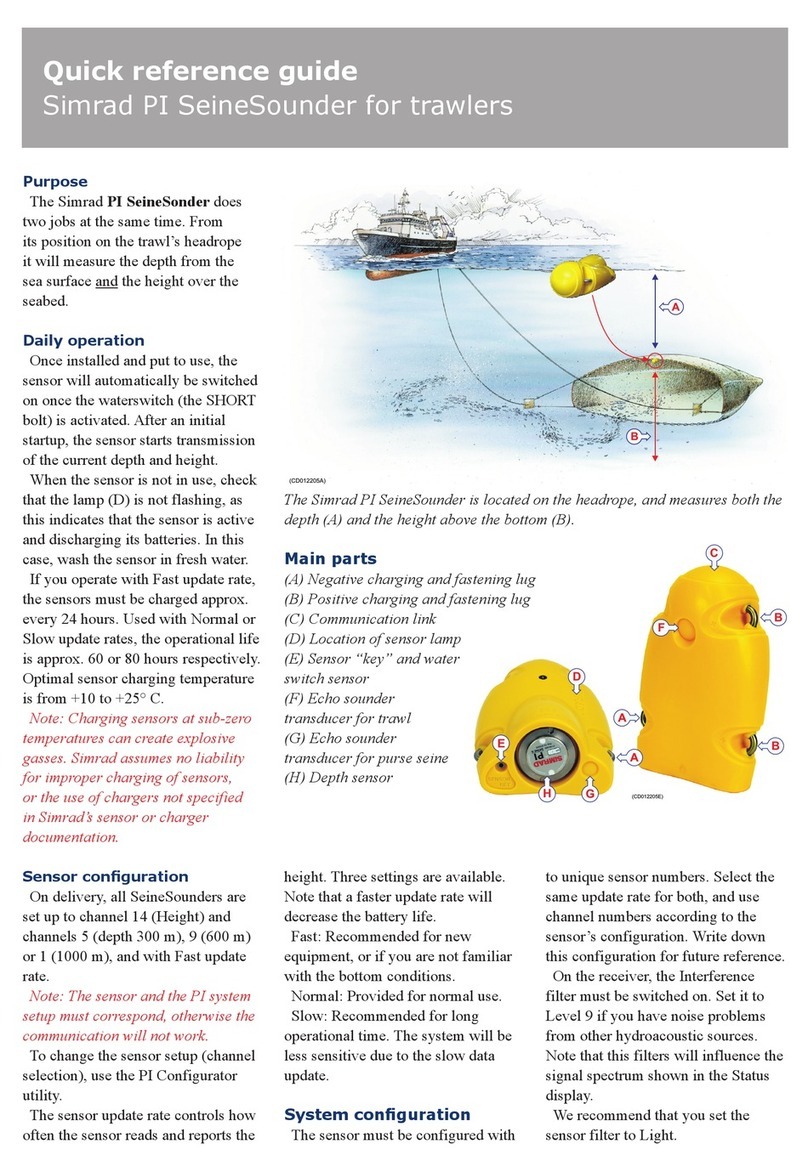
QUICK REFERENCE GUIDE
PI Rip sensor
Purpose
sensor is identical to the
, and it must be regarded as a
second application for the Catch sensor.
sensor will monitor if your
net is damaged and ripped apart due to
obstructions or foreign objects on the
(A) = The PI Rip is mounted on the
footrope with the two sensor wires
stretched out and the wires engaged.
(B) = Two strong rubber bands
ensure that the sensor is activated.
If the net is torn, the slack in the net
will disengage the Rip sensor.
In most cases, one or two Rip sensors
mounted on the footrope will be
sufficient to monitor the condition of the
net. Once installed and put to use, the
sensor will automatically be switched on
once the waterswitch is activated. After
an initial startup, the sensor will detect
the status of the detection wires, and
transmit this information to the vessel.
When the sensor is not in use, check
that the sensor lamps (D) do not flash
from time to time, as this indicates that
the sensor is on and is discharging its
batteries. In this case, wash the sensor in
fresh water to remove salt and dirt.
(A) = Negative charging / fastening lug
(B) = Positive charging / fastening lug
(D) = Location of sensor lamp
(E) = Water switch sensor
On delivery, all Rip sensors are
update rate. If you wish to use
sensors simultanously, one of them
must be set to a different communication
Note: The sensor and the PI system
setup must correspond, otherwise the
communication will not work.
To change the sensor setup (channel
selection), use the PI Configurator utility.
The sensor update rate controls how
often the sensor reads and reports the
door spread. Three settings are available.
Note that a faster update rate will
decrease the battery life.
(~5,3 sec): Recommended if you
suspect that the bottom conditions are
rough and unpredictable, and that damage
may be easily inflicted. This mode
provides the shortest battery life before
(~33 sec): Recommended for
normal bottom conditions.
(~125 sec): Recommended if the
bottom conditions are well known, and
you know that no obstructions exist.
This mode provides longest operational
battery life before charging.
857-165111 / Rev.B / December 2005
must be configured with a unique
sensor number. Select channel number
and update rate according to the
sensor’s configuration. Write down the
configuration for future reference.
filter must be switched on. Set it to
if you have noise problems from other
hydroacoustic sources. Note that with
the filter on, it will influence the signal
excessive noise. Position
raw data and fastest possible response.
rate, the sensor must be charged
approximately every 35 hours. Used
the operational life is approximately
150 or 300 hours respectively. The
optimal sensor charging temperature
Note: Charging sensors at sub-zero
temperatures can create explosive
gasses. Simrad assumes no liability
for the improper charging of
sensors or the use of chargers not
specified in Simrad sensor charging
documentation.

